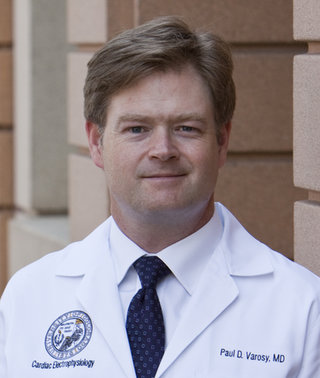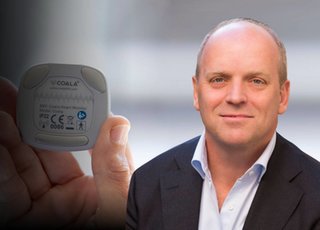Paul Varosy, MD is the Director of Cardiac Electrophysiology at VA Eastern Colorado Health Care System and Professor of Medicine-Cardiology at the University of Colorado. His clinical work focuses on heart rhythm disorders and he is a keen advocate for streamlining the measurement and improvement of the quality of heart rhythm care through more comprehensive integration of patient-reported outcomes. Dr. Varosy has been recognized for his contributions to the field by some of the leading U.S. cardiology organizations, including the American Heart Association, the American College of Cardiology, and the Heart Rhythm Society.
The expectation that patients with cardiac implantable electrophysiology devices should be monitored remotely started to take shape around 2008, when the Heart Rhythm Society came out with an expert consensus statement on the optimal way to supervise the care of such patients. It reaffirmed that recommendation in 2017 and, for the most part, healthcare organizations that aspire to be patient-centered and innovation-driven have taken it to heart and put systems in place to enable such monitoring. The few laggards that initially resisted have eventually “seen the light” and have also increased their use of such tools in recent years. But what has really pushed hospitals and clinics towards fully embracing remote patient monitoring has been the Covid-19 pandemic.
The coronavirus crisis did not unveil anything healthcare leaders did not already know with respect to RPM, but it laid bare for everyone to see the infection risks posed by face-to-face visits to both elderly patients and those with multiple chronic conditions on the one hand, and to healthcare staff on the other. As a result, it prompted a lot of decision-makers to seriously question whether we really need all these face-to-face visits and whether we can accomplish many of their objectives remotely.
Thankfully, payers also got the message and made it a little bit easier for physicians, and certainly for cardiologists and electrophysiologists, to take advantage of mobile outpatient telemetry systems. For some reason people previously thought that it was more reimbursable from a payer standpoint to pay for someone to be seen in person, but at least temporarily we are seeing some release of those restrictions.
As far as cardiac RPM, there is no stopping this trend now – it is in full ascendance. With some of the bureaucratic hurdles removed and with technological innovation making both consumer and clinical grade wearables increasingly accurate in terms of data capture and interpretation, it is ready for prime time.
Of course, as with every major technology shift, there are some “kinks” to the current mobile cardiac outpatient telemetry offerings that still need to be ironed out. One of those is the potential for false alerts of detected arrhythmias, which necessarily prompt physicians to stop what they are doing in order to review the strip and possibly even ask the patient to come into the clinic for a check-up. The technology and algorithms built into those devices need to improve to a point where they only flag actually dangerous rhythms and not the occasional irregular heart beat.
Another key issue that needs to be ironed out is on the user side. It´s the phenomenon of the worried well – patients who believe they need to send an EKG strip to their doctor many times a day just because they want to know if they have a normal sinus rhythm. Clinics, including our own, can become quickly overwhelmed by the volume of data coming in from this type of anxious patient who is sending literally hundreds of transmissions of their heart rhythm with an expectation that their doctor has nothing else to do but to review every one of these. Apart from the distractions caused by all these data, the real trouble there is sorting out which ones of those rhythms are dangerous and need to be addressed immediately and which ones can be triaged to not be reviewed. No physician wants to miss something potentially dangerous and this could also be risky from a medical legal standpoint, if they had the information and somehow didn´t see and act on it.
To address both of these challenges, providers and payers need to figure out a way to support the process of reviewing and billing for these transmissions, because they require a substantial amount of time. In reality, we are talking about technology-enabled, real-time patient-reported data; for clinical researchers and evangelists in the value-based healthcare camp, that is the Holy Grail, but in the trenches it can look very different.
One possible solution to the reviewing problem could be a type of platform that acts as a middleman between the patient´s cardiac telemetry device and their physician, and ensures that the data reach their destination while respecting doctors´ time and competing direct care commitments. At my practice we recently partnered with a technology company called Cliexa, which provides a suite of cloud-based home health platforms that do just that: capture and integrate patient-reported data directly into users´ electronic medical records. Cliexa´s cardiology platform PULSE was developed in partnership with the American College of Cardiology and we are currently trialling it for the remote management of our patients with symptomatic AFib. We are also planning to test it out next for remote monitoring of patients with hypertension, specifically to supervise their medication adherence and blood pressure measurements.
It is hard for me to imagine that with the progress we´ve made in the last few months in terms of our ability to be more nimble with visits, to be more conveniently accessible for patients, and to conduct things remotely without compromising quality of care, we are going to just go back to how things were before the pandemic. If there's any good that can come of the Covid era, I think it's the coming-of-age of technologies that can really transform the legacy healthcare model and make digital health the default, rather than an elective, option.







